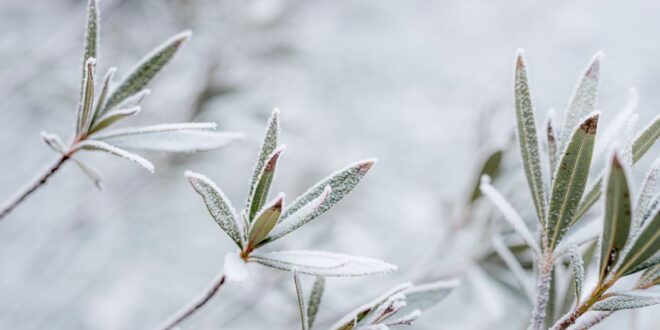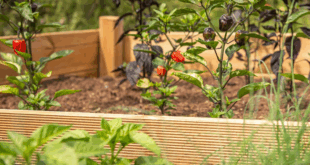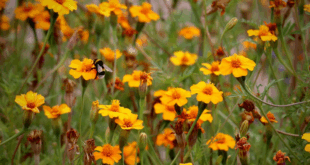Gardening enthusiasts often face the challenge of finding plants and hedges that can withstand harsh winter conditions. Fortunately, there are numerous resilient varieties that can survive and even flourish in cold weather. In this article, we will explore some of the best plant and hedge options that are well-equipped to thrive in chilly climates.
I. Evergreen hedges for winter charm
Evergreen hedges are a popular choice for creating privacy screens and adding aesthetic appeal to winter landscapes. These hedges retain their leaves throughout the year, providing a touch of greenery even during the coldest months. Some excellent options for evergreen hedges include:
1. Boxwood (Buxus)
Boxwood is a versatile and hardy shrub that can withstand freezing temperatures. Its dense foliage makes it a perfect choice for creating formal hedges. Boxwood can be easily pruned into various shapes, allowing for creative designs.
2. Yew (Taxus)
Yew is an evergreen conifer with dark green, needle-like leaves. This hedge is known for its ability to tolerate extreme cold and is highly resistant to disease and pests. Yew hedges can be pruned into geometric shapes or left to grow naturally.
3. Arborvitae (Thuja)
Arborvitae, also known as the “tree of life,” is a popular choice for winter hedges due to its elegant conical shape and dense foliage. It thrives in cold climates, making it an excellent option for regions with harsh winter conditions.
4. Copper Beech
Copper Beech, also known as Purpurea, is a wonderful option to a hedge. It boasts of glossy foliage in dark green and purple shades.
II. Hardy perennial plants for winter color
While hedges provide structure and privacy, perennial plants offer an opportunity to add a splash of color to winter gardens. Here are some resilient perennial plants that can brighten up your landscape during the colder months:
1. Winterberry (Ilex verticillata)
Winterberry is a deciduous shrub that produces vibrant red berries during winter. Its fruit provides a striking contrast against the backdrop of snow-covered landscapes. Winterberry thrives in moist soil and is an excellent choice for attracting birds to your garden.
2. Hellebore (Helleborus)
Hellebores, also known as Christmas roses, are known for their ability to bloom during winter. These hardy plants come in various colors, including white, pink, and purple. Hellebores prefer well-drained soil and can tolerate both shade and cold temperatures.
3. Snowdrop (Galanthus)
Snowdrops are delicate, bell-shaped flowers that bloom very early in the year, often poking through the snow. These hardy bulbs can withstand frost and cold temperatures, adding a touch of elegance to winter gardens. Snowdrops thrive in well-drained soil and prefer partial shade.
4. Japanese holly (Ilex Crenata)
The Japanese holly, also known as the Ilex Crenata, is a winter hardy, evergreen hedge plant that is also resistant to the boxwood caterpillar and the boxwood moth. You can use it as a hedge for decoration in the middle of the garden, but it is also possible to use it as a nice tight hedge as a partition.
III. Cold-adapted trees for winter interest
In addition to hedges and perennial plants, certain trees are specifically adapted to withstand freezing temperatures. These trees not only survive the winter but also offer unique features that enhance your outdoor space. Here are a few examples:
1. Japanese Maple (Acer palmatum)
Japanese Maples are renowned for their beautiful foliage, displaying vibrant hues of red, orange, and purple. While they are not as cold-hardy as some other trees, certain varieties, such as the ‘Bloodgood’ cultivar, can tolerate freezing temperatures. Japanese Maples thrive in well-drained soil and benefit from some protection from strong winds.
2. Birch (Betula)
Birch trees are known for their striking white bark, which provides a visual contrast against the winter landscape. Many birch species, such as the river birch (Betula nigra), are cold-hardy and can withstand freezing temperatures. These trees prefer moist soil and thrive in full sun.
3. Spruce (Picea)
Spruce trees are a common sight in cold regions, and for good reason. They are well-suited to cold climates and offer year-round interest with their evergreen needles. Varieties like the Norway spruce (Picea abies) and Colorado spruce (Picea pungens) are particularly cold-tolerant and can thrive in snowy conditions.
 Gardeners Club The Gardeners Club is a free to join online club for everyone with an interest in gardening and gardens.
Gardeners Club The Gardeners Club is a free to join online club for everyone with an interest in gardening and gardens.






